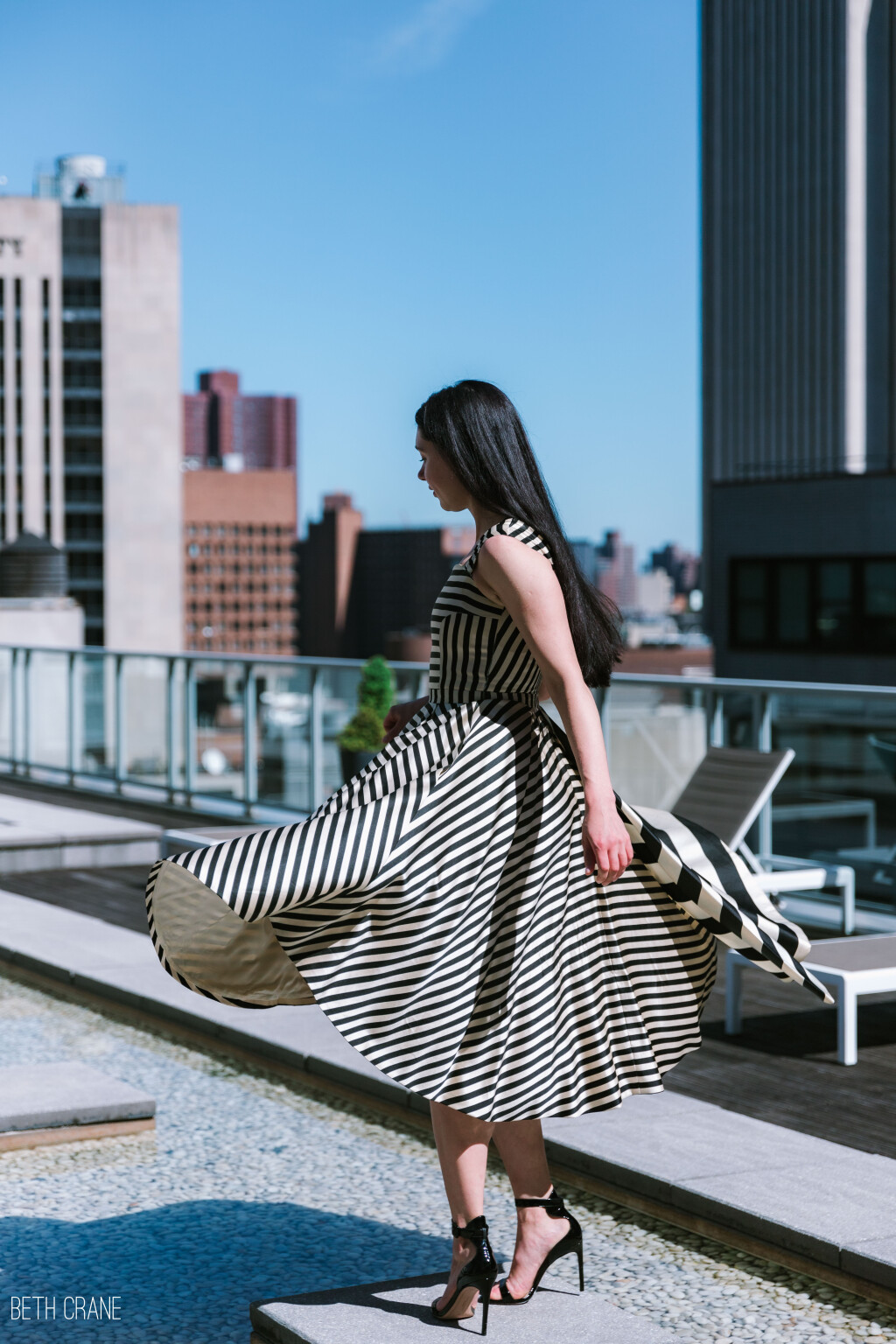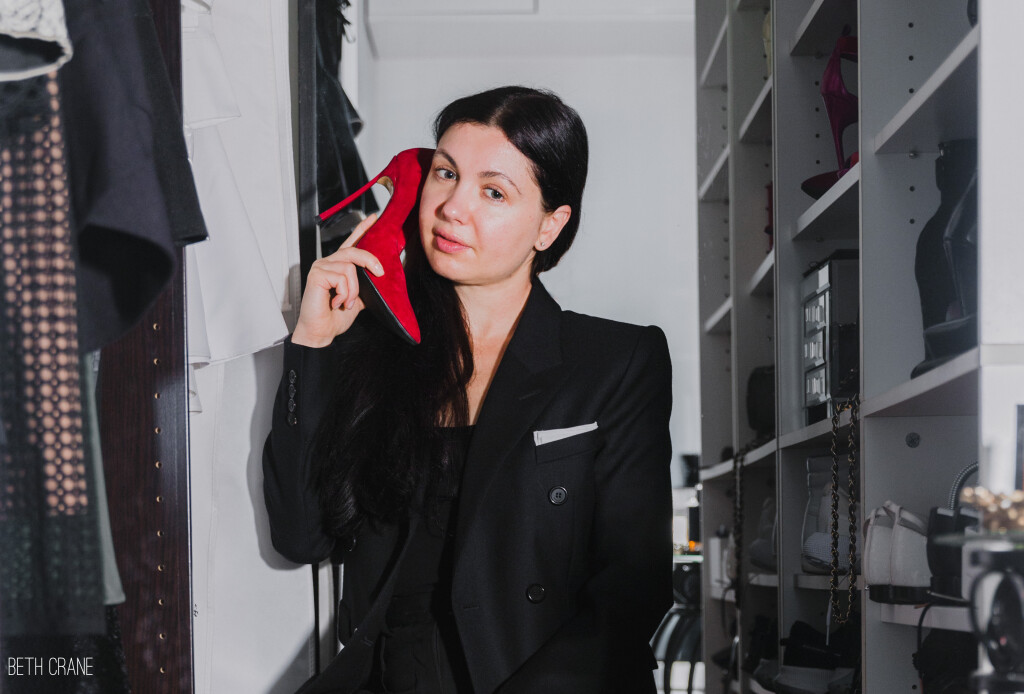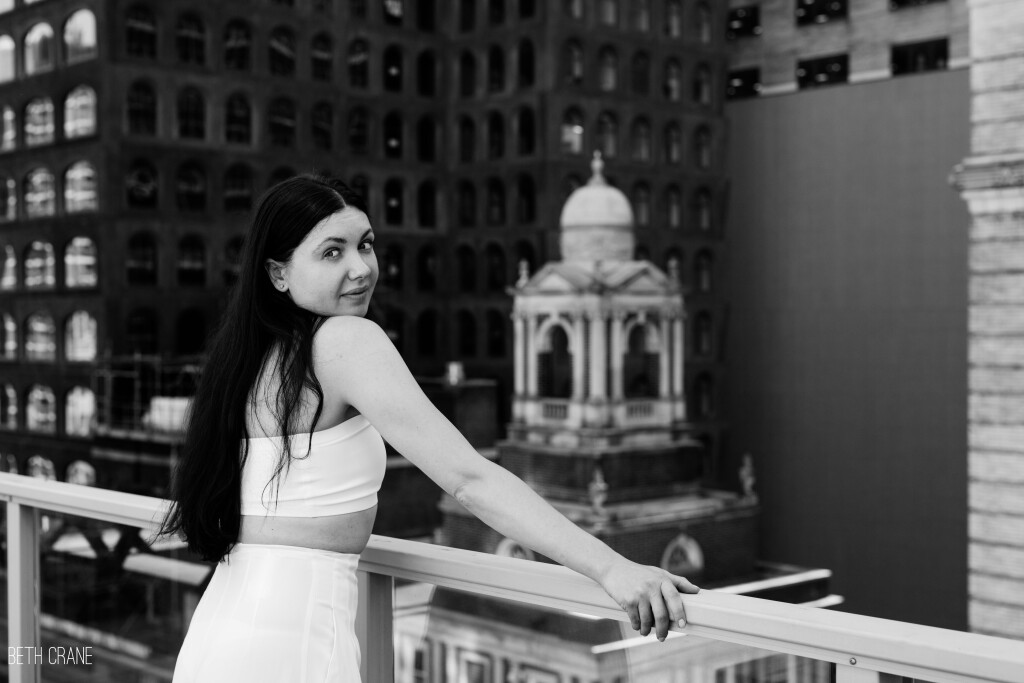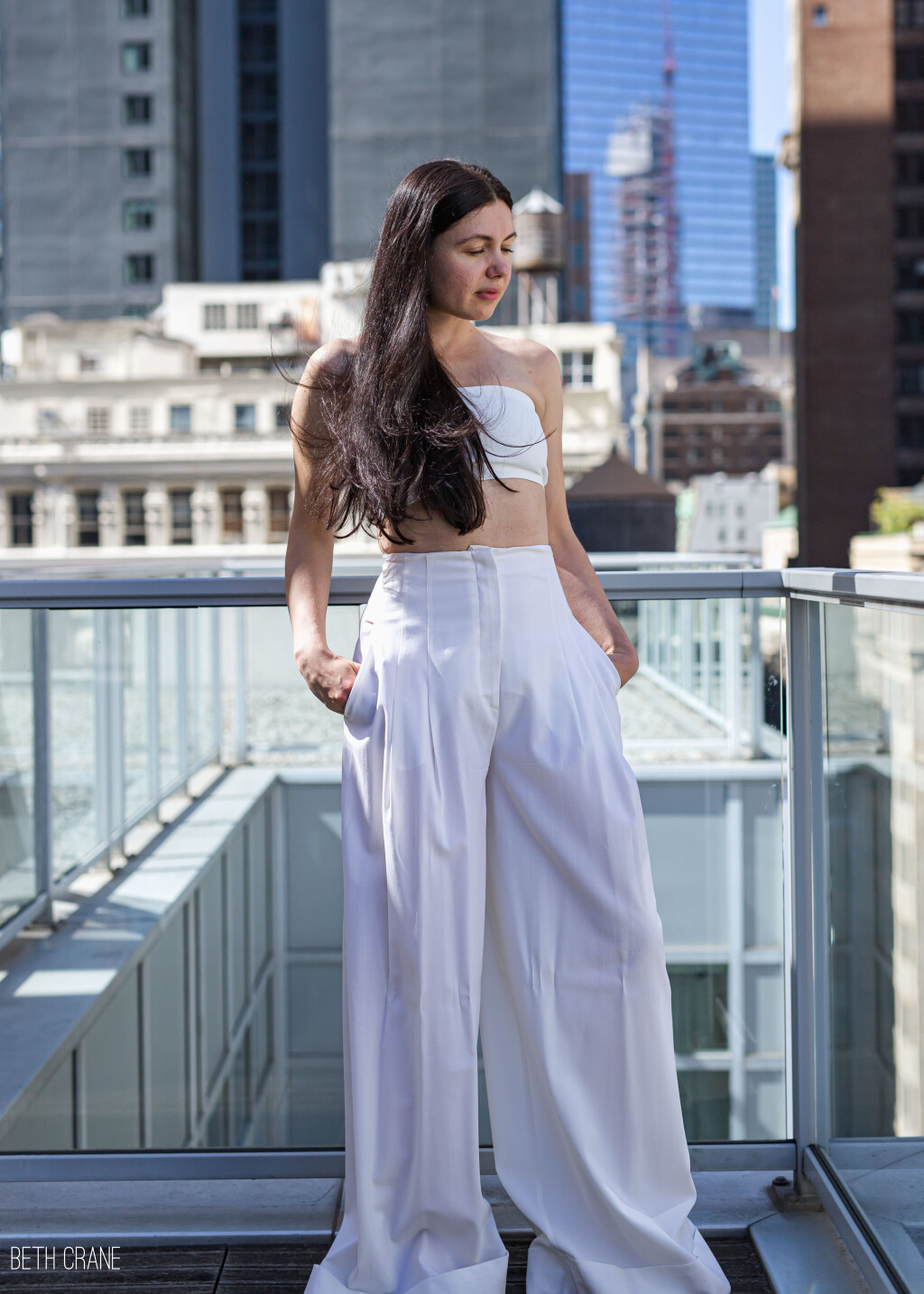If you needed to choose just one person to live vicariously through, might I suggest Anna Nicanorova? Her life is filled to the brim with adventures, art, creation, and community. For this profile we were fortunate enough to set up inside/around Anna’s apartment, bringing her highly personalized space into the story for a glimpse into how and where she makes so much magic.
Tell us a little about you.

I lead the tech org at Annalect, working with diverse teams of web and data engineering, infrastructure, security, user experience, and support to build enterprise-level software for the media and advertising industry.
My main sport is high altitude mountaineering; I love to climb high mountains and try to make at least one big expedition per year. When I am not climbing, I am usually training by running, cycling and hiking. I also fly planes - I have not yet obtained my pilot’s license but I can land a plane and talk to ATC towers.
I have a penchant for bookstores and libraries, which leads me to compulsive accumulation and consumption of books. I need art for inspiration and meditation, so I frequent all museums around the world - from big institutions that contain major masterpieces to extremely niche ones that can be located in an elevator shaft. I am easily impressed by large and complicated massive structures that humans build, so I often set my leisure trips around architectural destinations or factory tours. I am also very passionate about education and try to give back by mentoring and teaching coding in public schools. In the little time that is left, I am learning Chinese and Spanish and volunteering in soup kitchens.
What are you working on at the moment, and what do you love about it?

At this point in my career I write little code professionally, but I always try to have pet projects that allow me to code for fun and learn about things I’m passionate in. My past projects have included 3d printed chess sets, interactive maps of the most beautiful libraries, research into what happened to Long Island mansions, and maps of unbuilt architecture in New York - rendered to be experienced in Augmented Reality. My problem is that I have too many projects I want to make, so I am consistently forcing myself to finish the current one before starting the next.
Currently I am working on a project “Aesthetics of Code” to showcase the decorative aspects of code - the goal is to showcase visual aesthetics: from syntax and linguistics to the tools that help write it. I am also finishing an essay about the streets in Mexico City’s Polanco neighbourhood that are named after famous writers.
How do you balance work and your many other passions?

I’m not alone in having more passions and desires than time and resources. However, what works for me is a calendar. While lists (to-do lists, bucket lists) are elastic, calendars are mercilessly confining. The lists allow for unlimited piles of aspirations, while the calendars operate in sobering and finite properties of time. Daily, while playing Tetris with my calendar, I try to make time for the most important, filtering the noisy and frequently fleeting desires. In my opinion, true prioritization comes to light only under the ruthless constraints of “finity”.
As you become more senior and move up the career ladder, how have your priorities/your perspective changed?

The early part of my career was mostly self-centered: I was obsessed with my code, reports, decks, presentations, speeches. I always wanted to improve, to be better, to excel. Then, leadership to me meant superiority and relentless self-improvement.
As I moved up the career ladder, managing more and more people, it became less about me and more about people on my teams. My job became empowering my teammates, helping them to realize their potential, inspiring them to go above and beyond, to let them accomplish more. Today, leadership to me is about elevating others.
Are there any misconceptions about STEM fields that you’d like to clear up?

I am very frustrated with the perception that writing code is hard or that in order to be a software engineer one should be “good at math”. In my opinion, writing code is a very creative endeavor that is more closely related to writing poetry, than solving constrained equations. I think the software engineering field needs creative people who often, probably intimidated by misconceptions, choose to pursue humanities.
How has your style evolved to what it is now?

My style is the reflection of my lifestyle. I need to attend a wide variety of events from software conferences to art fairs, from mountain climbing expeditions to boardroom presentations, hence my wardrobe has to be highly modular. Instead of investing in various occasion outfits, I made the decision to limit my wardrobe to only two colors: black and white.
This choice means that all of my clothes are easily intermixed and amalgamated. It also means that most of the pieces in my wardrobe have very high Return on Investment (ROI), since each piece can be reused on different occasions: I can wear a skirt (with a white blazer & pocket square) to an opening night of the New York City Ballet and the same skirt (with a white t-shirt & sneakers) to a grocery store when picking up food for a hiking expedition.
What do you feel most you in and why?

According to “enclothed cognition” theory, the clothes we wear affect how we think, feel, and function. For example, in the simulated experiments, people who wore white coats became more attentive and careful, while people who wore blazers became more confident and assertive. So I try to pick my clothes based on circumstances or how I want to feel. That said, for some reason, I have always preferred skirts over pants…
This post has been a long time coming - I was first introduced to Anna through Dona in 2017, and we’ve been trying to co-ordinate a shoot since then. Let me know what you think - was it worth the wait?
